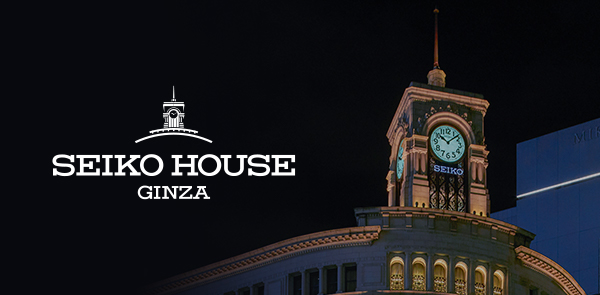August 05, 2020
Seiko Holdings Corporation
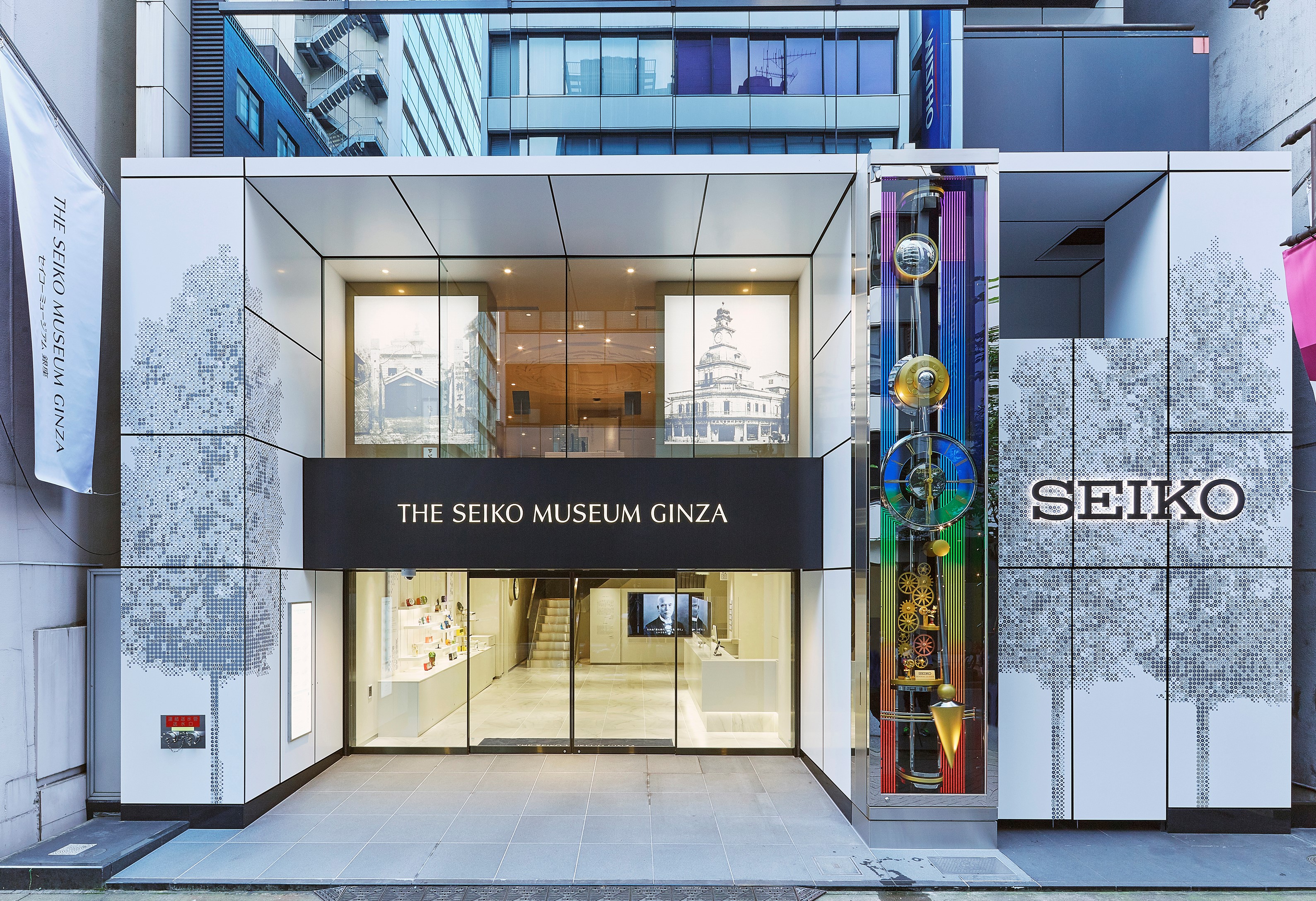
As part of the activities to commemorate the 160th anniversary of the birth of Seiko’s founder, Kintaro Hattori, on August 19, 2020, Seiko Holdings Corporation (Chairman & Group CEO, CCO: Shinji Hattori; head office: Chuo-ku, Tokyo, Japan; hereinafter referred to as “Seiko”) is moving the Seiko Museum of time and timepieces from Sumida-ku to Ginza, the birthplace of Seiko, where it will re-open as a corporate museum comprising 6 floors, from the 1st basement to the 5th floor. On the facade of the museum, a grand 5.8-meter high pendulum clock, the Rondeau La Tour, will be unveiled.
This museum is based on the Seiko Institute of Horology, set up within the Seikosha factory (now Seiko Clock Inc.) in 1981 as part of the activities commemorating the 100th anniversary of the company’s founding. In order to increase Seiko brand awareness and appeal to more visitors, it was re-established in 2012 as the Seiko Museum. As well as being a corporate museum that collects, preserves, and compiles various historic items emerging from Seiko’s group companies since Seiko’s founding, in a broader sense, it is also a place of research into the history of time and timepieces. What makes the Seiko Museum special is its commitment to taking part in initiatives that contribute to society by carrying out well-balanced museum activities, with a focus on holding workshops, etc., including activities for children.
Each floor within the museum has a particular theme, with about 500 exhibits and presentations related to time and timepieces. On the 2nd floor is the Kintaro Hattori Room, where visitors can follow the challenges and efforts of Kintaro Hattori, known as the King of Timepieces in the East, who led the way in modernizing the timepiece industry in Japan. This exhibit presents our founder’s philosophy of “always one step ahead of the rest.” In other exhibits, visitors can experience the technology involved in sports timing, which is inseparably connected with the history of Seiko timepieces, and the technology of Seiko’s sports watches that have supported so many adventurers in taking on extreme challenges.
In addition to the Seiko’s milestone products, the museum gives the visitors the panorama of the world’s horological history, starting with the ancient sundial, and the comprehensive collection of Wadokei, traditional Japanese clocks developed during the Edo period.
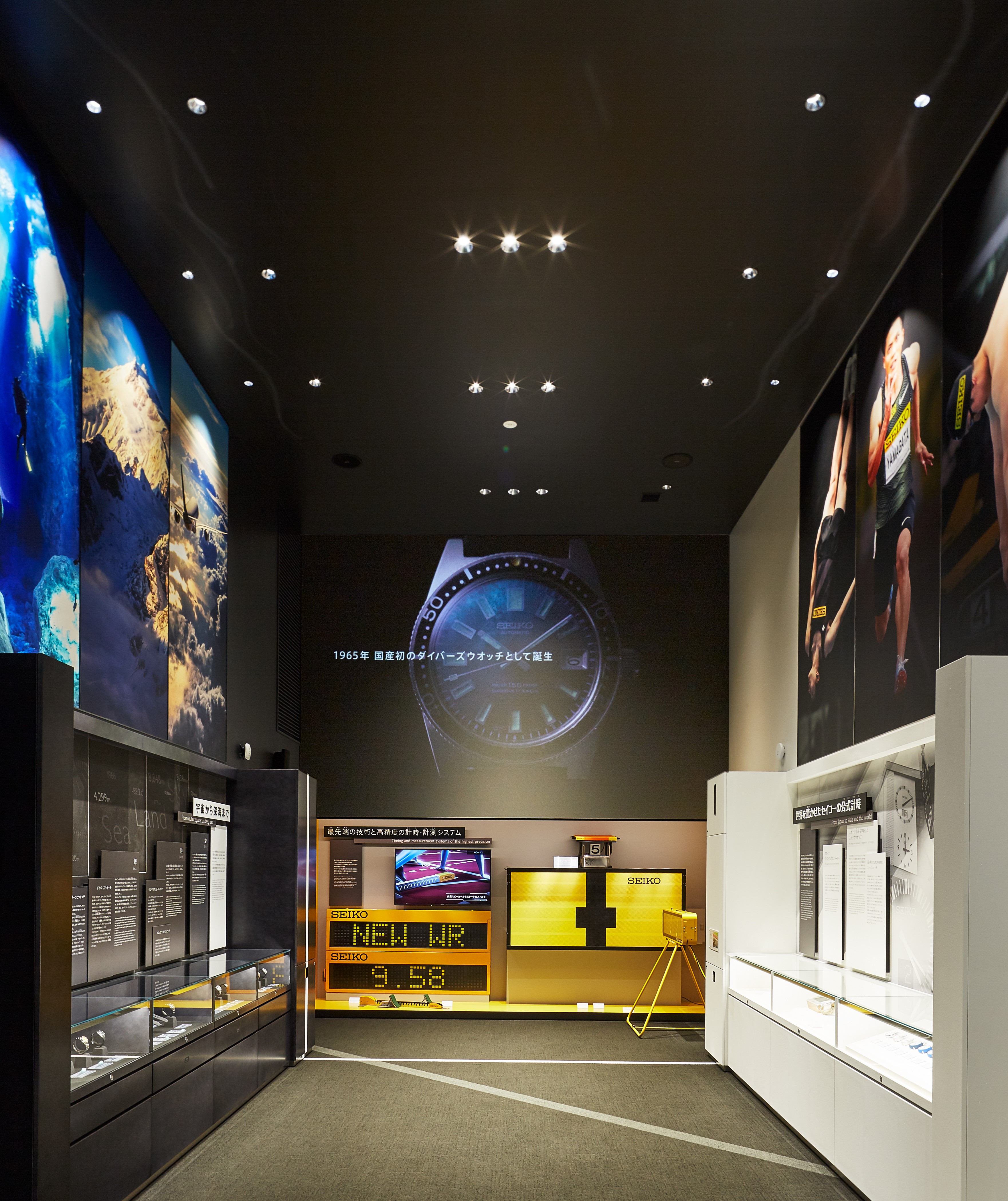
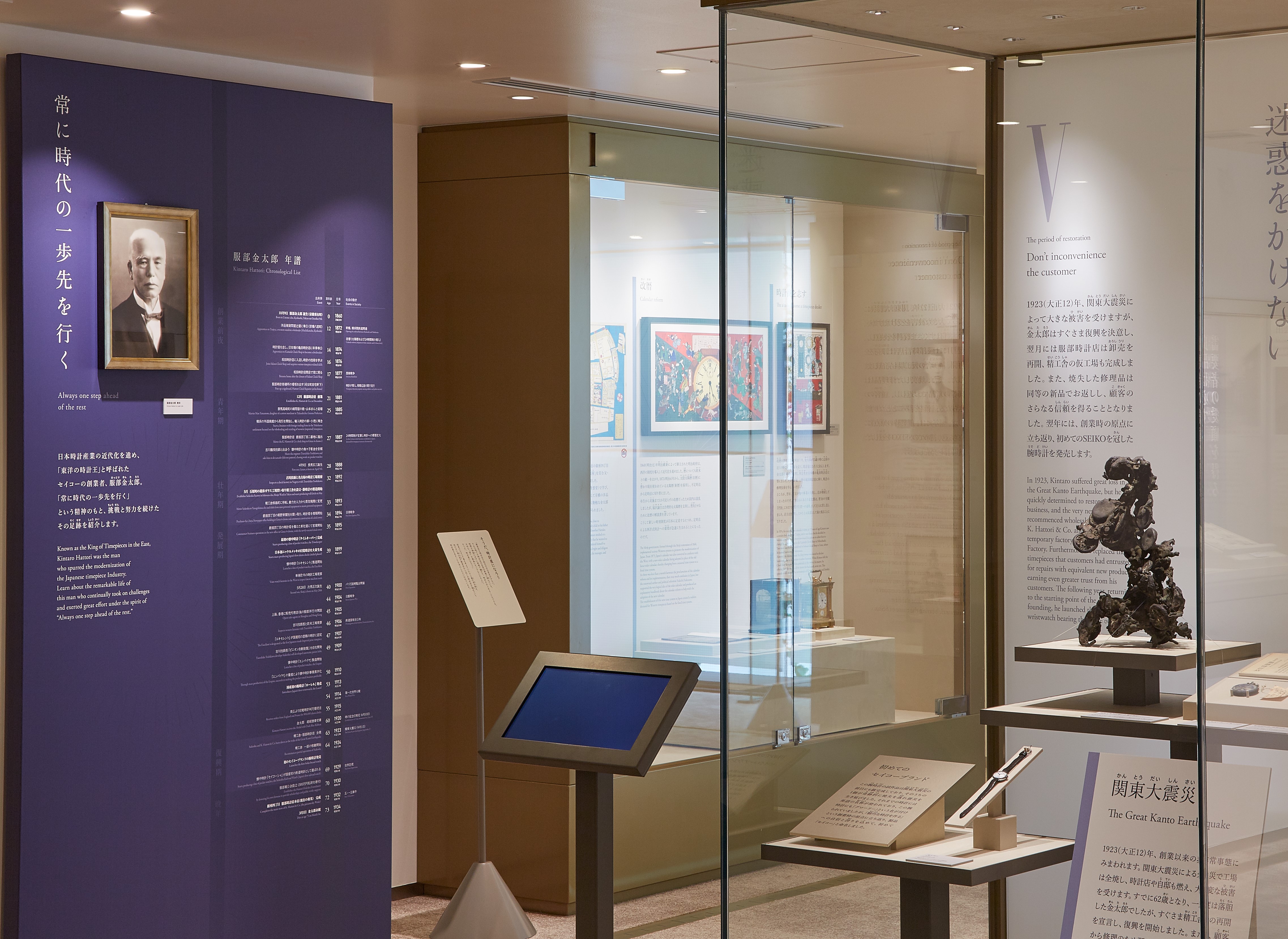
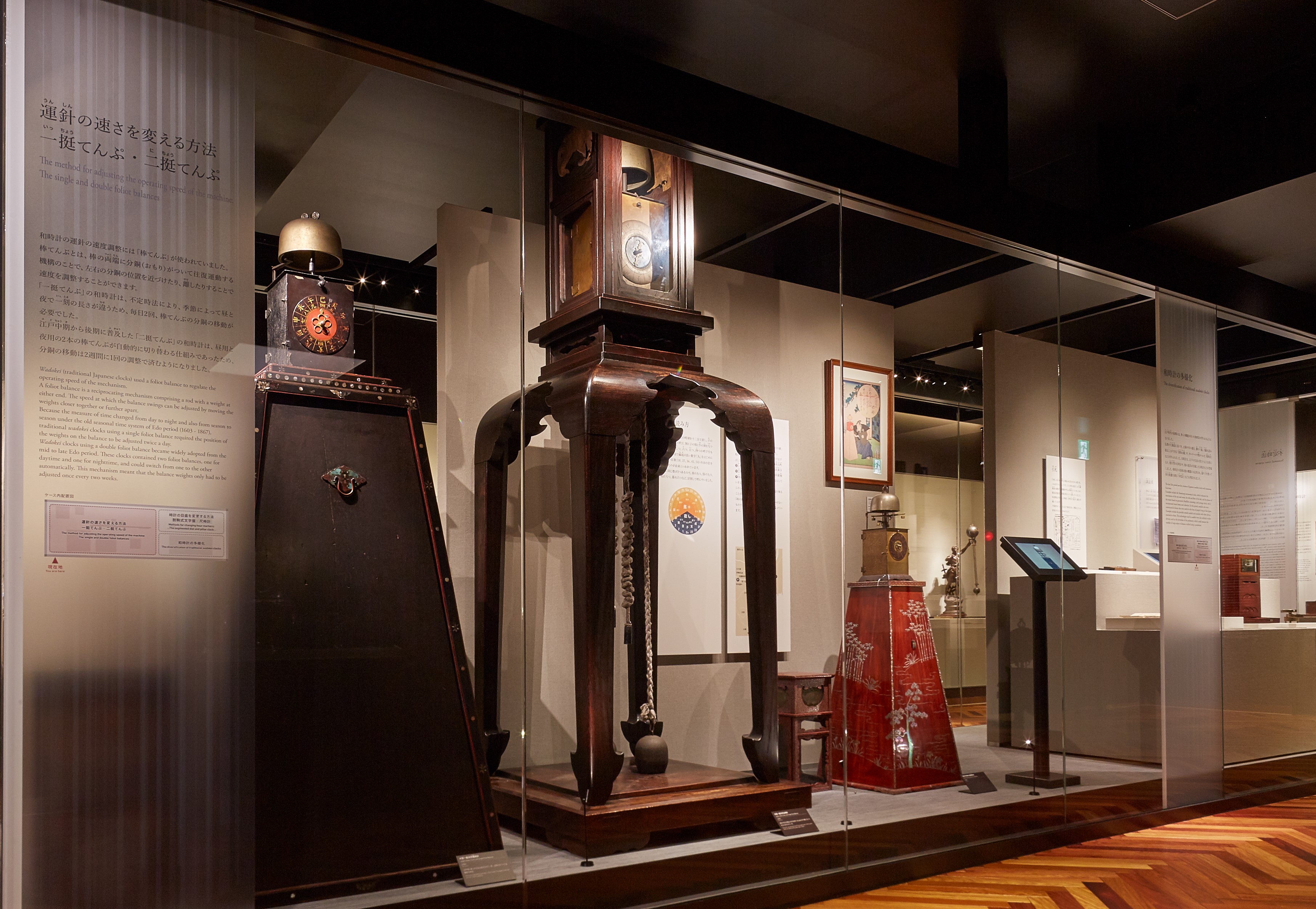
Outline of exhibition floors
B1F Extreme time - Sports timing and measurement, sports watches
1F The beginnings of time - Reception and museum shop
2F Always one step ahead of the rest - The achievements of Seiko’s founder, Kintaro Hattori
3F From time indicated by nature to human-made time - The history of time and timepieces around the world
4F Precise (Seiko) time - Seiko’s products from its beginning to the 1960s, the world’sfirst quartz watch
5F A variety of times - The diversity of Seiko products after the 1970s
Information on Visiting
Name: THE SEIKO MUSEUM GINZA
Location: Seiko Namikidori Bld., 4-3-13 Ginza, Chuo-ku, Tokyo 104-0061
Total floor space: Approx. 492.5 ㎡
Nearby train stations:
Tokyo Metro Ginza Station: 1-min walk from Exit B4
JR Yurakucho Station: 4-min walk from Central Exit or Ginza Exit
Contact: Tel. +81-3-5159-1881
Opening hours: 10:30 to 18:00 (Closed Mondays and New Year holidays)
*Prior booking required for one of three daily timeslots(free entry).
Visit timeslots: (1) 10:30–12:30, (2) 13:00–15:00, (3) 15:30–17:30
THE SEIKO MUSEUM GINZA Website
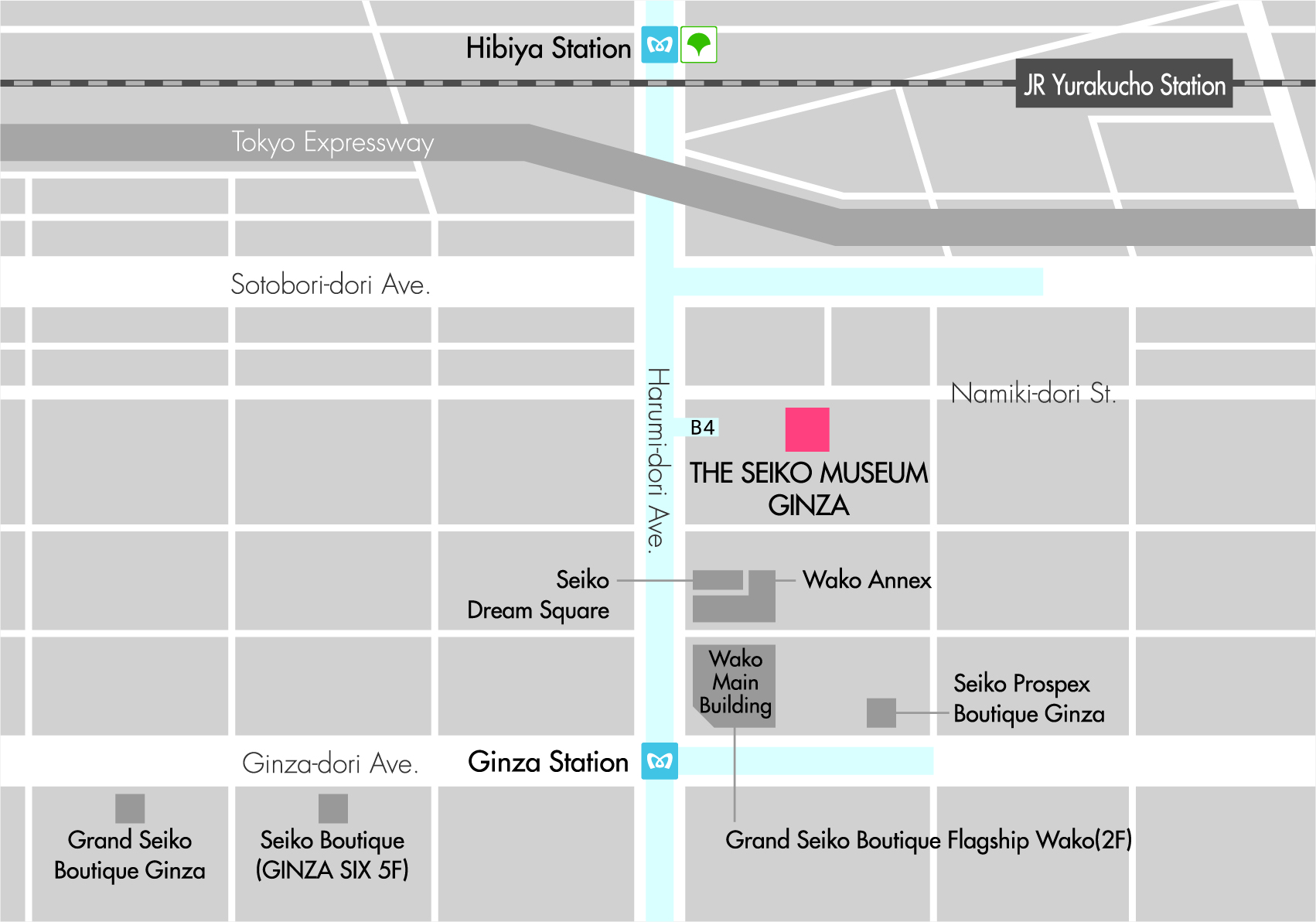
Rondeau La Tour
A magnificent pendulum clock with a stunning light and doll Performance
On the facade of the Seiko Museum Ginza, the grand pendulum clock Rondeau La Tour keeps time. The theme of the clock’s design is the pendulum. Every hour on the hour, automated dolls and cogwheels give a performance accompanied by a lightshow.
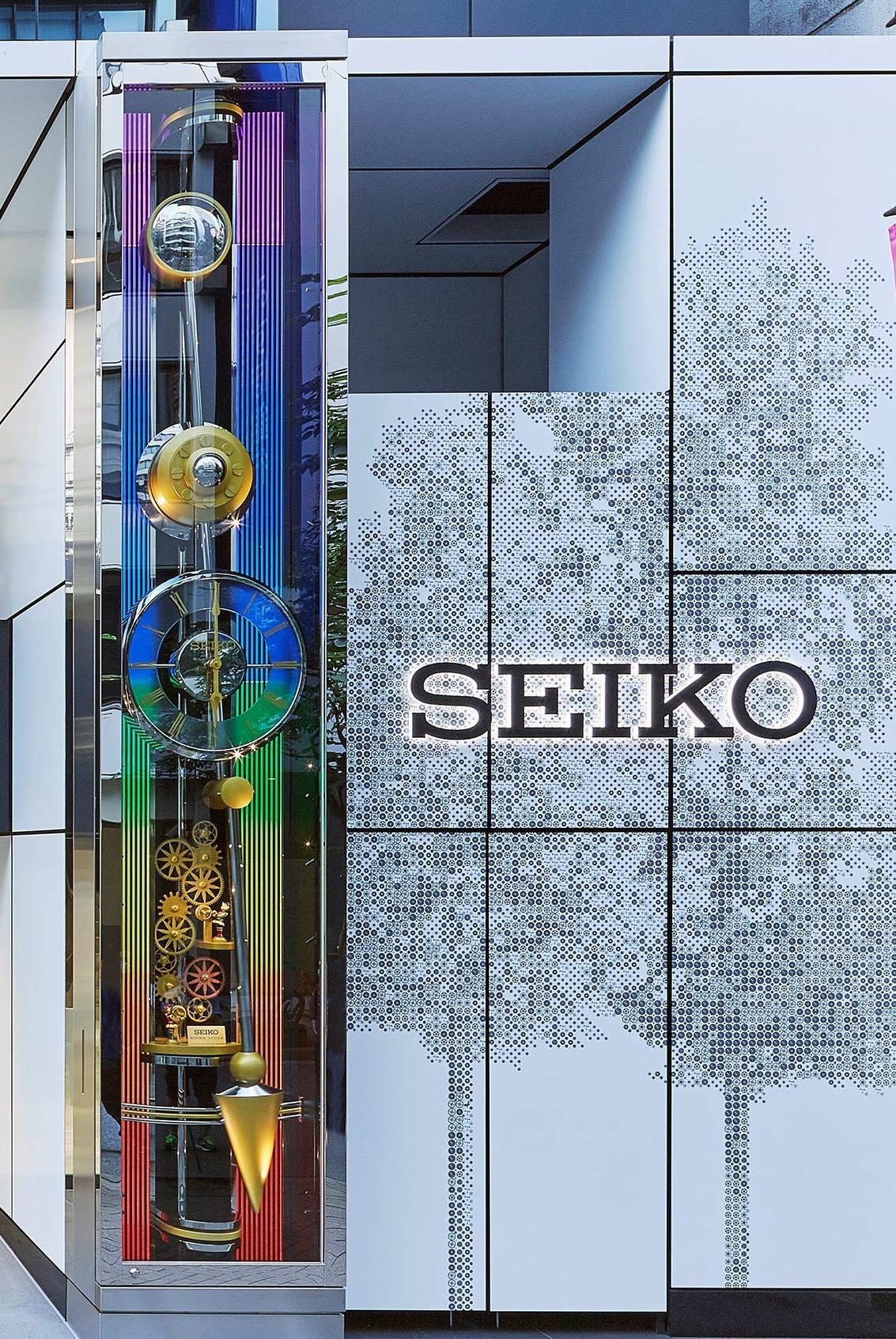
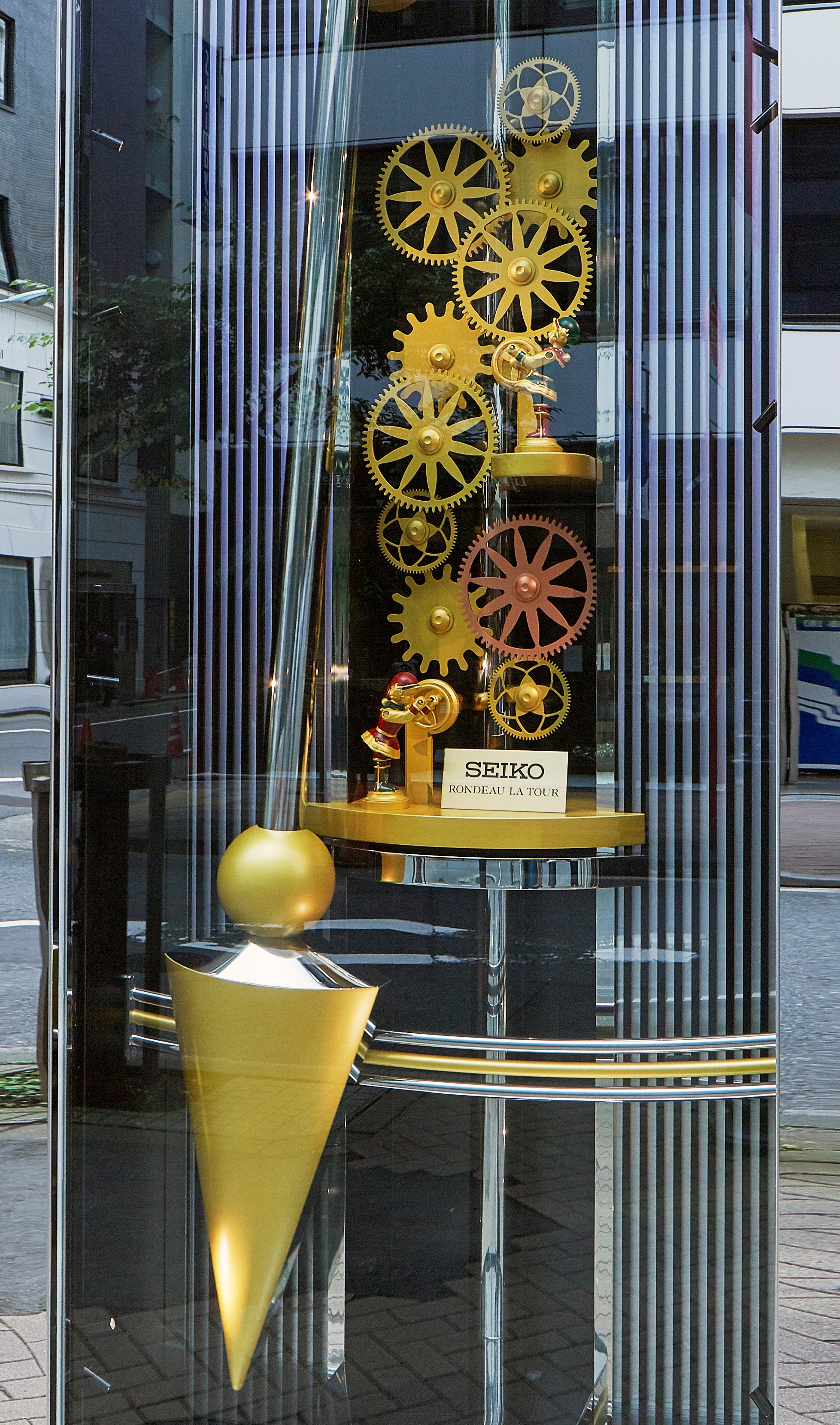
A sense of time created by a slowly swinging pendulum
The pendulum continues to swings slowly and unceasingly, 24 hours a day.
The clock uses electromagnetic attraction to replicate the natural pace of a swinging pendulum.
Observers can enjoy watching the dynamic motions of the clock through the glass facade made from a single pane.
Variations in the expression of light according to the day and night and seasons
In the daytime, white light spills out from the left and right which, together with the slowly swinging pendulum, produces a calm sense of time. At night, the light changes to represent each of the four seasons.
A small, dreamlike moment created with the joyous dance of dolls and cogwheels
Eight seconds before the hour a prelude sounds as the dolls begin to move. On the hour, a melody begins to play.
Over a period of 60 seconds, a series of golden cogwheels first turn one after another in time to the melody, and then the two dolls and all ten cogwheels begin to move together. Then after each of the cogwheels in turn has come to a stop, the melody ends and the dolls stand still.
Following the performance, the representation of a rainbow with lights of seven different colors
A 60-second lightshow then plays out in time with the melody that announces the hour.
The seven-colored lights light up from the bottom to the top, finally creating a rainbow bridge on the museum facade.
Since installing Japan’s first large-scale outdoor marionette clock, the Seiko Mullion Clock, in 1984, Seiko has played a major part in the history of large marionette clocks in Japan.
In 2019, Seiko installed the Seiko Rondeau in the main building of the Wako specialty store to express the enjoyment of clocks with the automated dolls and a pendulum similar to those of the Rondeau La Tour. And in keeping with the motif of the Seiko Rondeau, Seiko put the Rondeau Maison table clock on the market in July this year.
Summary of Clock
Name: Grand Pendulum Clock Rondeau La Tour
Size: Height: Approx. 5.8 m; Pendulum length: Approx. 4.6 m
Weight: Approx. 1.5 t
Driving mechanism: System clock with direct current tower clock mechanical body and tower clock controller
Melody: Seiko’s image song “Moving ahead. Touching hearts.”
Pendulum system: Inverted pendulum
Pendulum acceleration: Electromagnetic excitation method
Time calibration: FM radio control method (via single reception each morning)
Press Contact:
Seiko Holdings Corporation
Corporate Branding Department
prdept@seiko.co.jp
Related information


